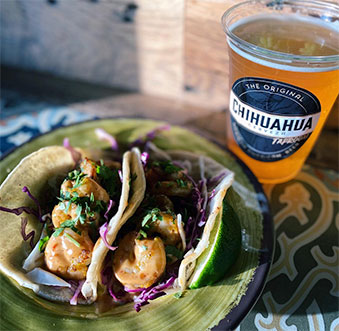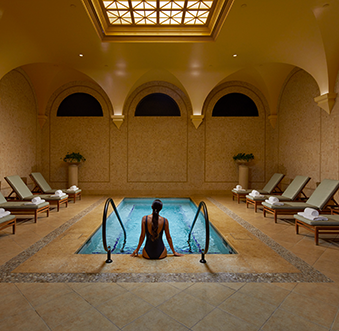In the late 1860’s, the bay was used as a landing to load hides, tallow, hay and other goods for export. In September 1870, Captain Samuel S. Dunnells’ steamer Vaquero ventured into the bay to offload a cargo of lumber and shingles. Captain Dunnells soon established “Newport Landing” by constructing a small wharf and warehouse near the west end of the present Coast Highway/Newport Bay Bridge.
James McFadden and his younger brother Robert acquired the landing in 1875 survey map of Newport Bay 1875 and for the next nineteen years operated a thriving commercial trade and shipping business. However, the bay was not yet a true harbor and sand bars and a treacherous bay entrance caused the McFadden Brothers to move the shipping business to the oceanfront by constructing a large pier on the sand spit that would become the Balboa Peninsula. The site was ideal because a submarine canyon (Newport Submarine Canyon), carved along with Newport Bay by the ancient Santa Ana River, provided calm waters close to the shore. McFadden Wharf was completed in 1888 and was connected by rail to Santa Ana in 1891.
For the next eight years, the McFadden Wharf area was a booming commercial and shipping center and a company town began to grow. However, in 1899, the Federal Government allocated funds for major improvements to a new harbor at San Pedro, which would become Southern California’s major seaport. The McFadden Wharf and railroad was sold to the Southern Pacific Railroad that same year, signaling the end of Newport Bay as a commercial shipping center.
In 1902, James McFadden sold his Newport townsite and about half of the Peninsula to William S. Collins, who saw Newport Bay’s resort and recreation potential. Collins took on Henry E. Huntington as a partner in the Newport Beach Company. Huntington had acquired the Pacific Electric railway system and used it to promote new communities outside of Los Angeles.
In 1905, the Pacific Electric “Red Cars” were extended to Newport. Collins began dredging a channel on the north side of the bay and deposited the sand and silt on tidelands that would become Balboa Island. Formerly known as Balisle, this enchanting little island was not always easy to get to. Newport Harbor was still largely undredged, and sailboat was often the only way to get around. Robert McFadden, an early Balboa Harbor developer had established a successful fishing wharf on the Balboa Peninsula and by 1906, the Pacific Electric line Red Cars began service to the Balboa Peninsula and Pavilion, and soon, the Red Cars would bring thousands of summertime visitors from Los Angeles.
Between 1902 and 1907, many of Newport Beaches’ waterfront communities were subdivided, including West Newport, East Newport, Bay Island, Balboa, and Balboa Island. This established the grid system of small lots and narrow streets and alleys that still exists today in these areas.
Within a few years, real estate promoters began sending salesmen up to wealthy Pasadena and soon to Los Angeles (both connected by the Red Cars) to promote property in and around Newport Harbor. Considerable Balboa Island property was sold in Pasadena, and this is one of the reasons that so many longtime Island residents continue to have family and contacts in the Pasadena area. One of these real estate promoters was William Collins. At the time, Balboa Island was little more than a sandbar that was usually swallowed up by high tide.
In 1908 and 1909, with permission of the Orange County Board of Supervisors, Collins moved his small dredge to the eastern part of the Newport bay, a mud flat called “Snipe Island,” and begin cutting a channel along the north side of the bay across from the Pavilion, pilling the sand and silt up on the mud flat and thus Balboa Island was born.
At this same time an advertising campaign was prepared offering lots for $350.00 to $750.00. The high priced lots were located on the waterfront. However, despite the advertisements, Collins originally sold lots on the Island for as little as $25, with promises that all streets, sewers and street lights would be soon installed and a bridge and ferry service to follow. Construction was begun for the ferry landing. Streets were staked out and lots were mapped. Even a few narrow sidewalks were built. A low 14-inch wooden bulkhead was built along the south side of the island and an impromptu sewer system was laid out with pipes draining onto the beaches at their low tide levels to keep the discharge out of sight.
Balboa Island was a summer vacation place. Most homes had no heaters, and were closed up in the winter. Families came down for the entire summer. Cooking was done on a gasoline stove as there was no gas or electricity. Coal oil lanterns and candles were used. The first “seawall”, a wooden bulkhead that protected part of the Island, was built in 1909. This was partially replaced by a cement barrier (cheap German cement) in 1912. Water lines to the Island were first laid in 1914.
The island grew slowly at first, but in 1916, it became part of the City of Newport Beach. In 1918 the Balboa Island Improvement Association was started (and is still going strong). The BIIA was a strong motivating force in working with the City on bulkhead repair, ferry service, a sewer system, water, gas, electricity, paved streets and sidewalks, and street lighting.
In those early days (1919), water for the Island came from the famous “Wooden Water Tower” built on Agate St. (removed in 1929). In 1920, Park Ave. was the only road paved on the Island. People had outhouses behind their house as there was no sewer. They buried trash in big holes dug in vacant lots. In 1920, a gas utility came to the Island (heating, cooking, lights)
Joseph Allan Beek, while still a student at Pasadena City College, was enchanted with the area, and became one of Collins’ salesmen. Joe Beek played a crucial role in the development of Balboa Island, and spent a lifetime devoted to it. In 1919, Joe got the first contract for a ferry between the Island and Balboa Pennisula. In 1920, the first car was pushed across the bay (for 10 cents). In 1922, Joe Beek got a 15 year franchise, using the ferry boat “Joker”, which could hold two cars. That franchise has continued until this day, with three 64 ft. boats that can carry three cars. He later served as Secretary of the California State Senate until his death in 1968.
By 1921, homes were beginning to fill in the Island and Balboa Peninsula. Roads to the Newport Harbor area were still largely undeveloped, and many people still arrived by rail to the peninsula and took the ferry over to the island. Although the first Bridge from the mainland to the North Bayfront was built in 1912, it was not capable of carrying automobiles until 1929, when it was refurbished.
The seawall was rebuilt in 1922. . The Grand Canal wooden bulkhead and walk were rebuilt in concrete in 1929. The present day Bay Front bulkhead, walks and public piers were completed in 1938.
In 1924, the narrow bridge to Balboa Island was replaced with two lanes of wood. That bridge existed until 1928, when it was demolished to make way for a Concrete Bridge. Some of the wood from the old bridge was used to construct the building next to the “Jolly Roger” restaurant on Marine Ave. (now Wilma’s). In 1929, a new Concrete Bridge was built and served for 51 years. Population grew from a little over 100 in 1929 to today’s 4,500 in winter and close to 10,000 summer renters. In 1981, the Bridge was replaced with a modern concrete structure with 9′ wide walks.
In the 20’s and 30’s, many movies were shot on Balboa Island. James Cagney bought Collins Island in 1938. The Coast Guard used Collins Island during WWII and Cagney sold the Island in 1948.
As we arrive in the 21st Century, it is reassuring to know that there are still a few places left on the planet like Balboa Island, California.
In 1953, the International Boy Scout Jamboree held its event where Newport Center and Fashion Island now sit. Thousands of tents were pitched in the area reachable only by a two-lane muddy trail called Palisades Road. The road was soon paved, and later the name was changed to Jamboree Road in honor of the Scouts.
Today it remains a major thoroughfare through Newport Beach, and ends at Balboa Island. Over the years, Balboa Island has developed into a wonderful community, home to professionals, families, retirees, students and celebrities. Some bay front lots that once sold for $25 are now appraised at over $3 million dollars. And yet, Balboa Island maintains its charm and small-town feel.
In the Summertime, the Bayfront is lined with joggers, children and summertime visitors eating Balboa Bars. In the serene winters, sometimes all one can hear is the sound of halyard lines beating against their masts and an occasional seagull. The Island has undergone significant improvements, thanks in great part to the Balboa Island Improvement Association.
Balboa Island continues to be a wonderful place, both for residents and visitors alike.

